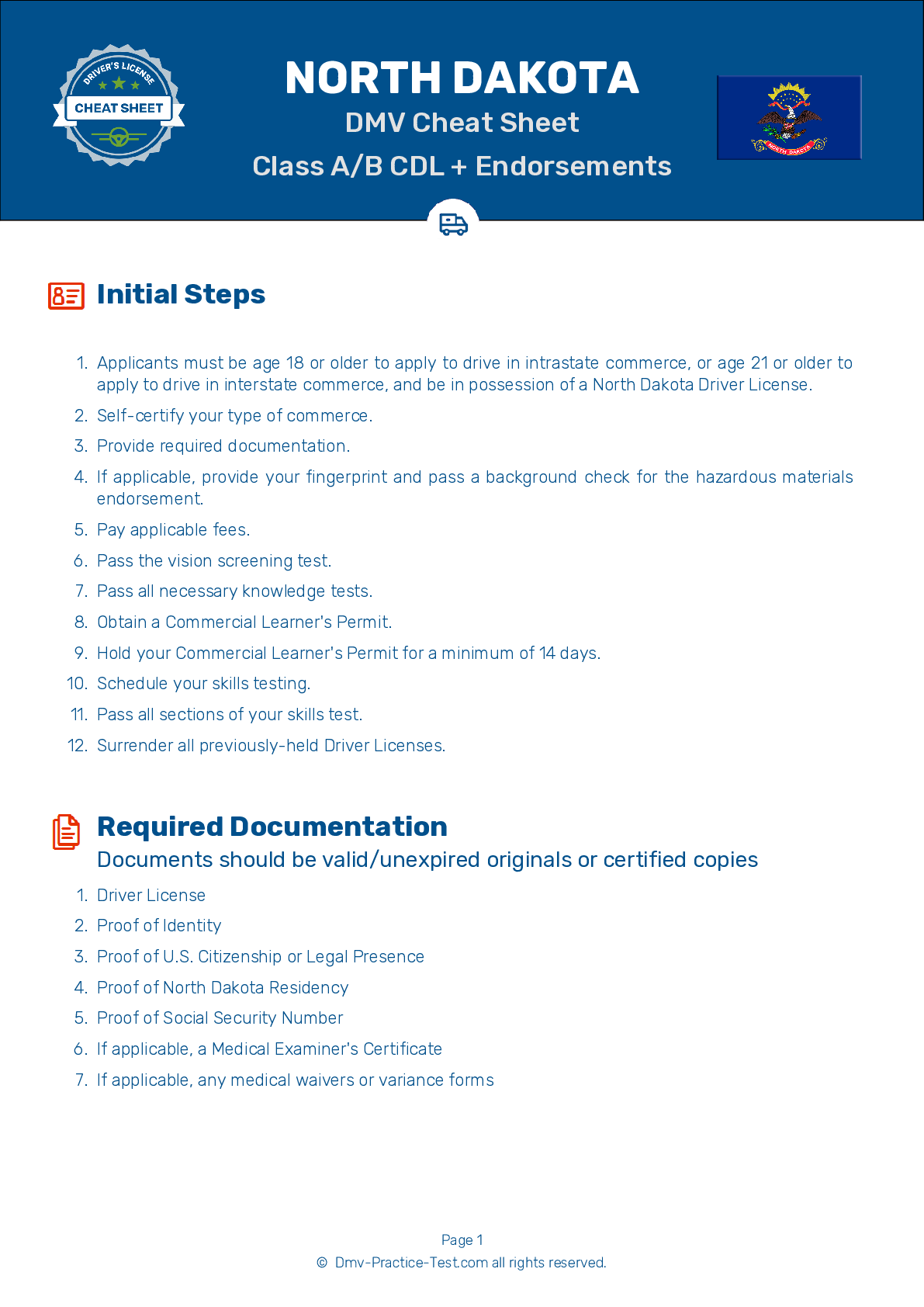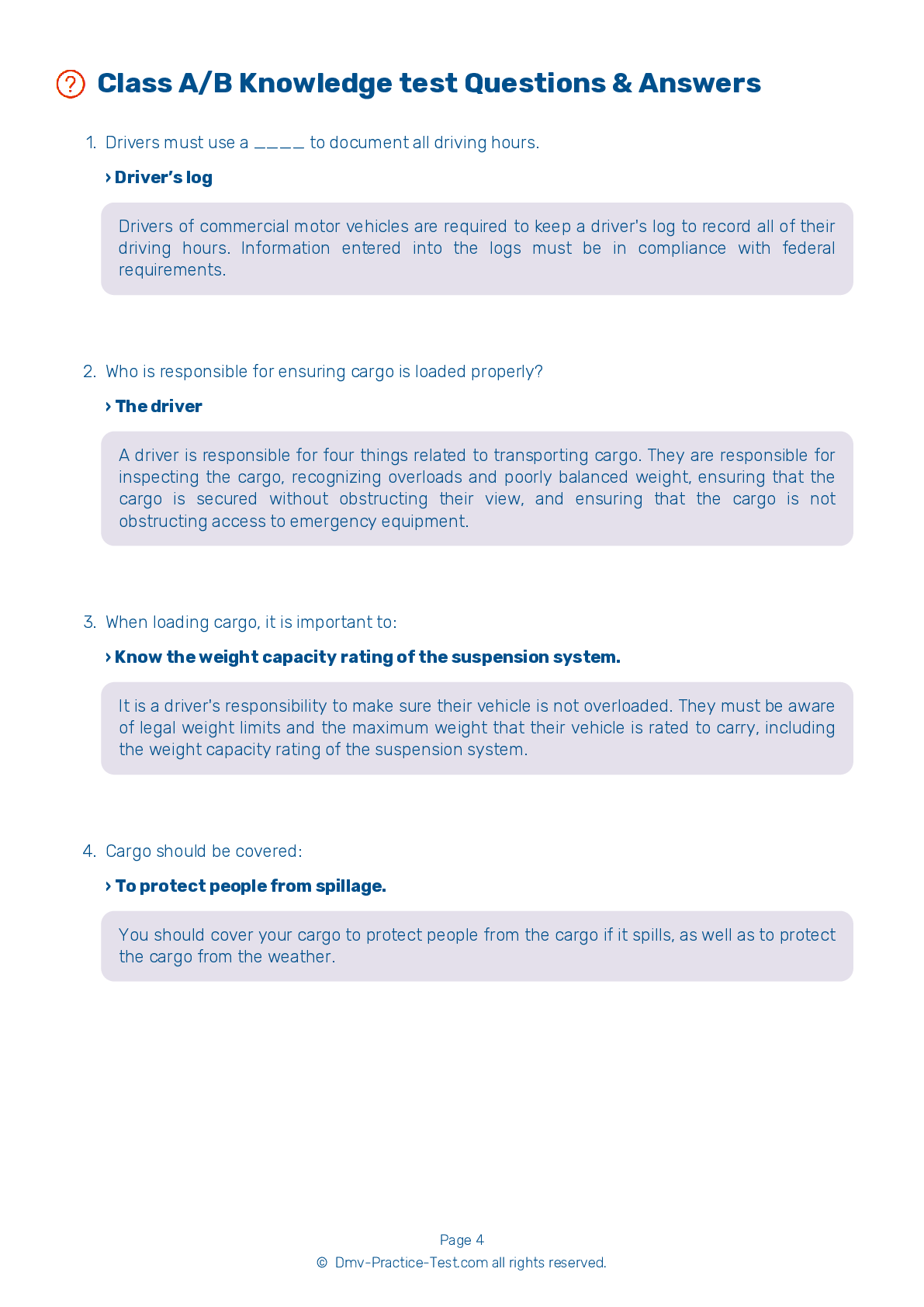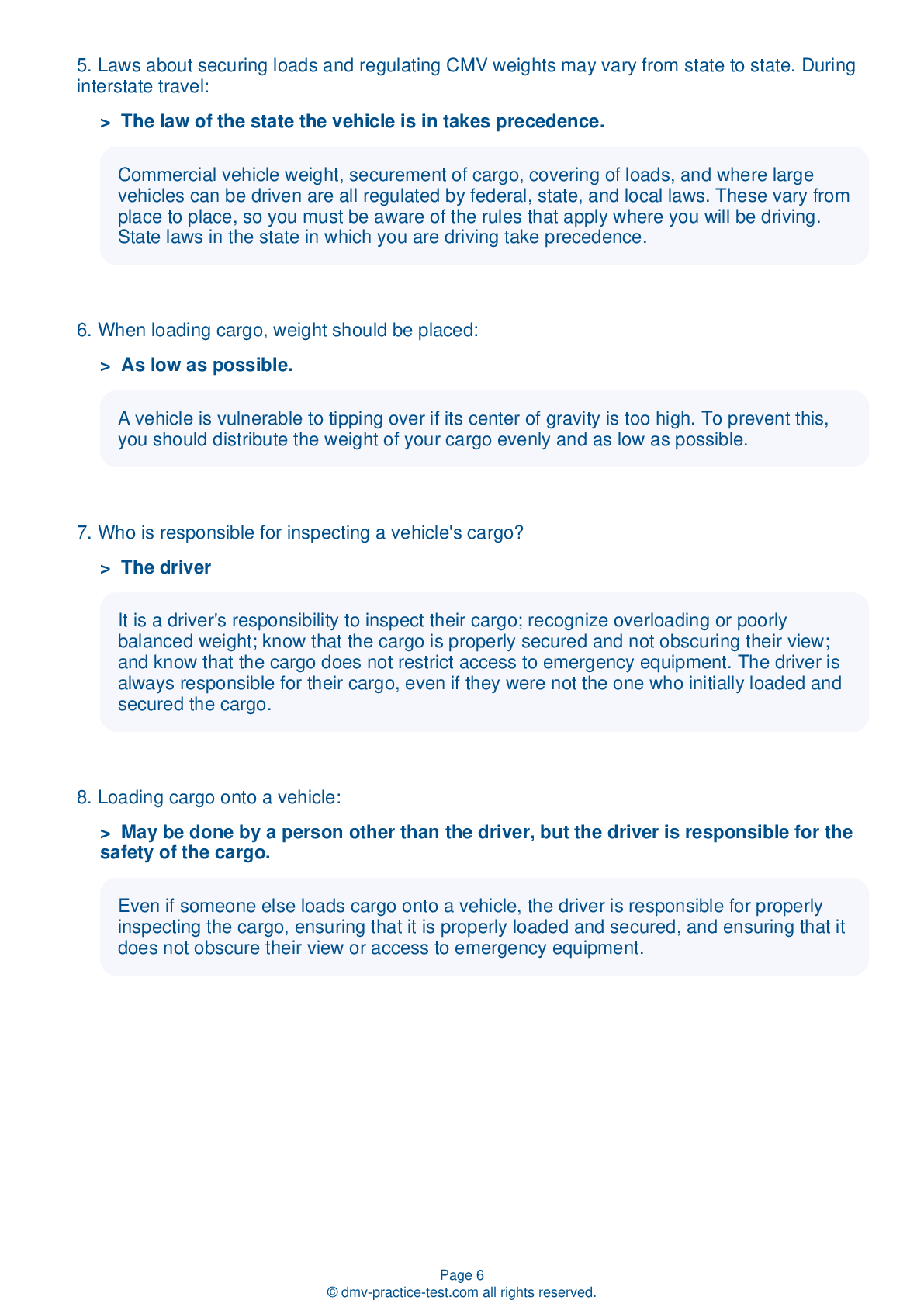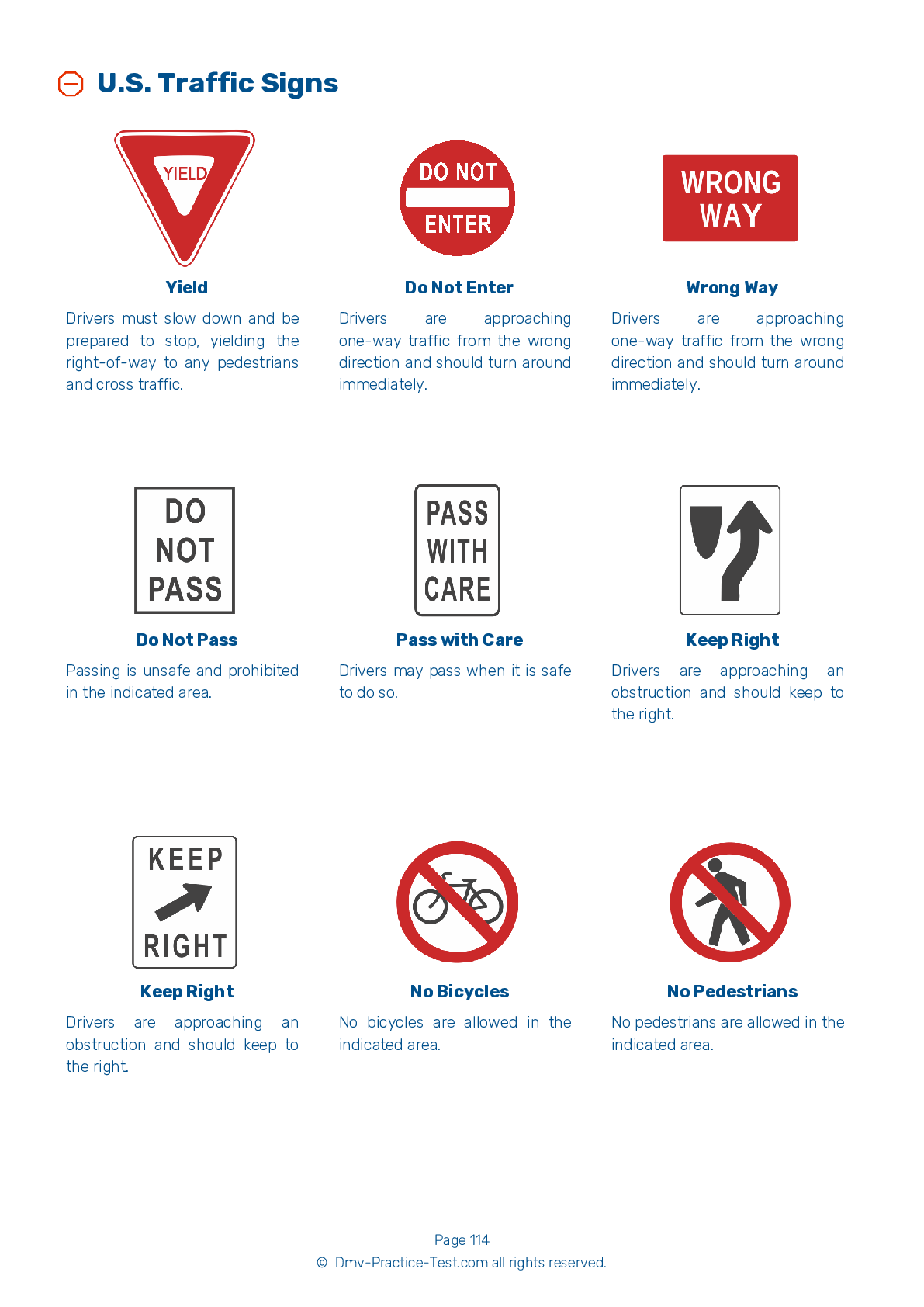Passenger Endorsement | North Dakota 2025 #1 Page 2 of 3
Train for FREE with our North Dakota CDL passenger endorsement practice test online. The official exam test consists of several obligatory parts, with all of them checking your knowledge of different blocks of road rules. If you need to obtain a ND DMV passenger endorsement in 2025, practice as much as possible. Free sample tests published on our website will help you check and improve your knowledge and boost your grades. Please bear in mind that DMV requirements for issuing a CDL permit with passenger endorsement may vary from state to state.
8 . Distracted driving:
Mental distractions can be just as dangerous as physical ones. It is possible for a person to look right at a hazard on the road but fail to notice it because their thoughts are occupied by something else.
9 . Carry-on bags should be secured:
Bus passengers must not leave luggage in doorways or aisles. All items should be secured in a way that allows passengers to exit by any door or window in an emergency.
10 . A low air pressure warning signal should activate:
In an air brake system, a low air pressure warning signal must come on if air pressure in the tanks falls below 60 psi. This warning signal may come in the form of a light, a buzzer, or a wig wag.
11 . If using the spring brakes while hauling a heavy load, a complete stop will:
Spring brakes will activate in a vehicle with air brakes if the pressure in the air system becomes too low. A heavily loaded vehicle will take a long time to stop when using only the spring brakes because the spring brakes do not work on all axles.
12 . How much water must be on a road surface for a vehicle to hydroplane?
Hydroplaning is an effect in which a vehicle's tires lose traction with the surface of the road and instead glide along a layer of water. There does not have to be much water on the road for this to occur.
13 . How is water and compressor oil removed from the bottom of an air storage tank?
Water and compressor oil are removed from air storage tanks through a drain valve. The water and oil can damage the brakes if left to accumulate in the system. Manually operated tanks must be drained every day to remove this build-up.
14 . You should always be able to stop within:
You should always make sure that your vehicle will be able to stop within the area of the road that you are able to see. This means that you must slow down whenever conditions reduce visibility.
See the exact questions that will be on the 2025 North Dakota DMV exam.
99.2% of people who use the cheat sheet pass the FIRST TIME
Lillian MCcranie explains how our CDL study guide was helpful in passing the exam and recommends it to everyone.
Cameron tells us how he purchased the CDL exam, and found it to be a useful tool which helped him pass the exam and find a job.



